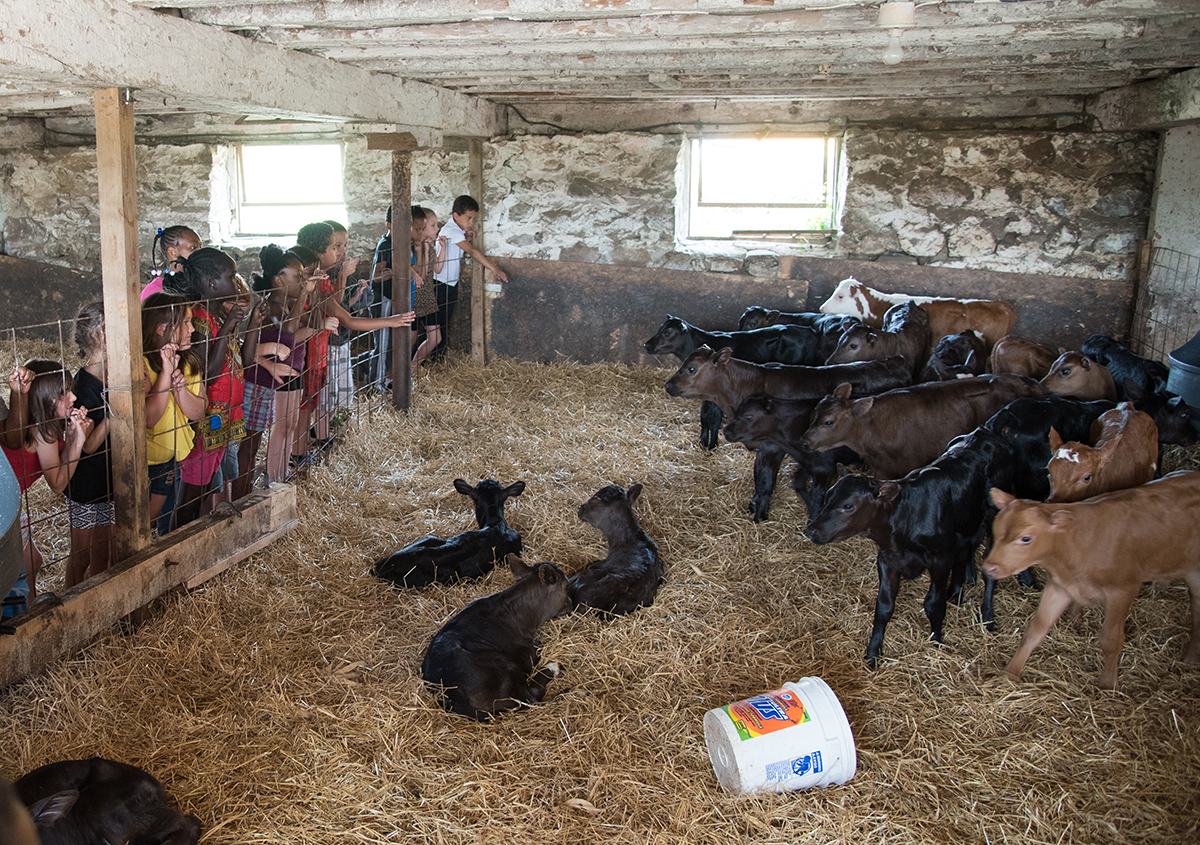Buffalo Farm-to-School has Cornell flavor
By R.J. Anderson

Like hundreds of other school districts in New York, the Buffalo City School District (BCSD) has faced plenty of hurdles with its newly adopted farm-to-school program. From finding suitable partner farms to encouraging student consumption of fruits and vegetables, districts like BCSD are encountering growing pains with beefed up farm-to-school programs.
But according to New York State Comptroller Thomas DiNapoli, who recently released a report outlining how districts in the state are addressing challenges of implementing farm-to-school programs, one area that sets BCSD’s program apart is its approach to youth engagement. Helping BCSD – the state’s second-largest school district – connect with students about the value of consuming locally grown foods are educators from Cornell Cooperative Extension (CCE).
“The biggest takeaway for us so far is that it’s not enough to simply buy New York state-grown produce and make it available on the cafeteria line,” said Cheryl Thayer, agricultural economic development specialist with CCE’s Harvest New York regional agriculture team. “You have to take it much further if you want the kids to buy in.”
Thayer has worked alongside BCSD Food Service Director Bridget O’Brien-Wood to shape the program since helping the district acquire the initial $45,000 grant from the U.S. Department of Agriculture to fund the pilot. In 2016, BCSD received a $43,260 New York State Farm-to-School Grant from the Department of Agriculture and Markets to fund the 12-school pilot through the end of December 2017. Thayer said the next step is to for the program to expand district-wide in 2018.
As BCSD’s program has grown and evolved, so has Cornell’s involvement. The centerpiece of those efforts has been Harvest of the Month, an initiative that selects locally sourced food items to be served once a week for a month. October’s menu items are broccoli and cauliflower. Each selection is accompanied by an awareness campaign targeting children and the adults who influence their food choices.
“With resources from CCE’s Eat Smart New York program, we’ve worked with Cornell nutrition educators to develop two-page newsletters specific to New York state food systems,” Thayer said. “Geared toward teachers and caretakers, they focus on the whole food system while providing details on each Harvest of the Month item, including the history of the food along with easy recipes and kid-friendly serving tips. They are disseminated in the classroom, posted online and mailed home to parents.
“Then in the cafeteria, we have infographic displays with details about each Harvest of the Month item,” she added. “Those are very colorful, don’t contain many words and are easy for kids to digest.”
To enhance education efforts on the life cycle of food, the program has enlisted a number of other tools, including hands-on classroom sessions teaching them to grow kale and tours to area farms. “We’re trying to get kids excited about knowing where their food comes,” she said. “A lot of these students live in the city, and it’s the first time they’ve stepped foot on a farm and encountered a large animal. It really hits home when they see something on the farm then see it in the cafeteria.”
Another key, said Thayer, has been to make the students part of the evaluation process. “One of the most meaningful things we did during the pilot, is what we called Taste Test Thursdays,” she said. “Every Thursday for 12 weeks, we had students vote on whether they liked the Harvest of the Month item, and gave them a sticker when they did so. Through our evaluation, we found that students were much more likely to try the item and less likely to throw it away when they were asked to vote.”
According to data collected by D’Youville College nutrition students after BCSD’s pilot study, constant engagement – inside and outside the cafeteria – was key to students’ willingness to change to their eating habits. Surveys conducted before and after the Harvest of the Month pilot revealed that the engagement activities and reminders translated to greater retention of information about food items and nutrition.
“You need to get them excited about what they’re eating and develop some sort of awareness about where it came from,” Thayer said. “If you don’t engage the kids on that level and get them excited the food will go right into the garbage and the program will have limited success.”
R.J. Anderson is a communication specialist/staff writer with Cornell Cooperative Extension.
Media Contact
Get Cornell news delivered right to your inbox.
Subscribe